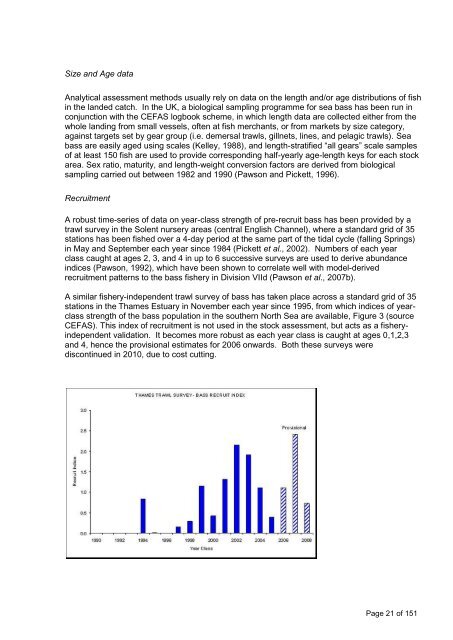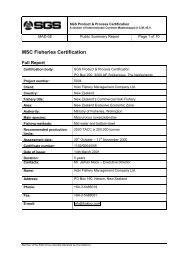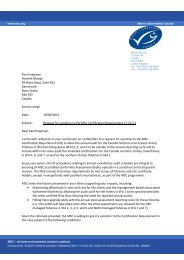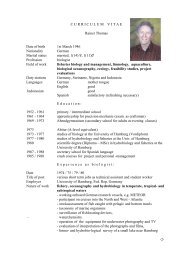SGS Product & Process Certification - Marine Stewardship Council
SGS Product & Process Certification - Marine Stewardship Council
SGS Product & Process Certification - Marine Stewardship Council
Create successful ePaper yourself
Turn your PDF publications into a flip-book with our unique Google optimized e-Paper software.
Size and Age data<br />
Analytical assessment methods usually rely on data on the length and/or age distributions of fish<br />
in the landed catch. In the UK, a biological sampling programme for sea bass has been run in<br />
conjunction with the CEFAS logbook scheme, in which length data are collected either from the<br />
whole landing from small vessels, often at fish merchants, or from markets by size category,<br />
against targets set by gear group (i.e. demersal trawls, gillnets, lines, and pelagic trawls). Sea<br />
bass are easily aged using scales (Kelley, 1988), and length-stratified ―all gears‖ scale samples<br />
of at least 150 fish are used to provide corresponding half-yearly age-length keys for each stock<br />
area. Sex ratio, maturity, and length-weight conversion factors are derived from biological<br />
sampling carried out between 1982 and 1990 (Pawson and Pickett, 1996).<br />
Recruitment<br />
A robust time-series of data on year-class strength of pre-recruit bass has been provided by a<br />
trawl survey in the Solent nursery areas (central English Channel), where a standard grid of 35<br />
stations has been fished over a 4-day period at the same part of the tidal cycle (falling Springs)<br />
in May and September each year since 1984 (Pickett et al., 2002). Numbers of each year<br />
class caught at ages 2, 3, and 4 in up to 6 successive surveys are used to derive abundance<br />
indices (Pawson, 1992), which have been shown to correlate well with model-derived<br />
recruitment patterns to the bass fishery in Division VIId (Pawson et al., 2007b).<br />
A similar fishery-independent trawl survey of bass has taken place across a standard grid of 35<br />
stations in the Thames Estuary in November each year since 1995, from which indices of yearclass<br />
strength of the bass population in the southern North Sea are available, Figure 3 (source<br />
CEFAS). This index of recruitment is not used in the stock assessment, but acts as a fisheryindependent<br />
validation. It becomes more robust as each year class is caught at ages 0,1,2,3<br />
and 4, hence the provisional estimates for 2006 onwards. Both these surveys were<br />
discontinued in 2010, due to cost cutting.<br />
Page 21 of 151





